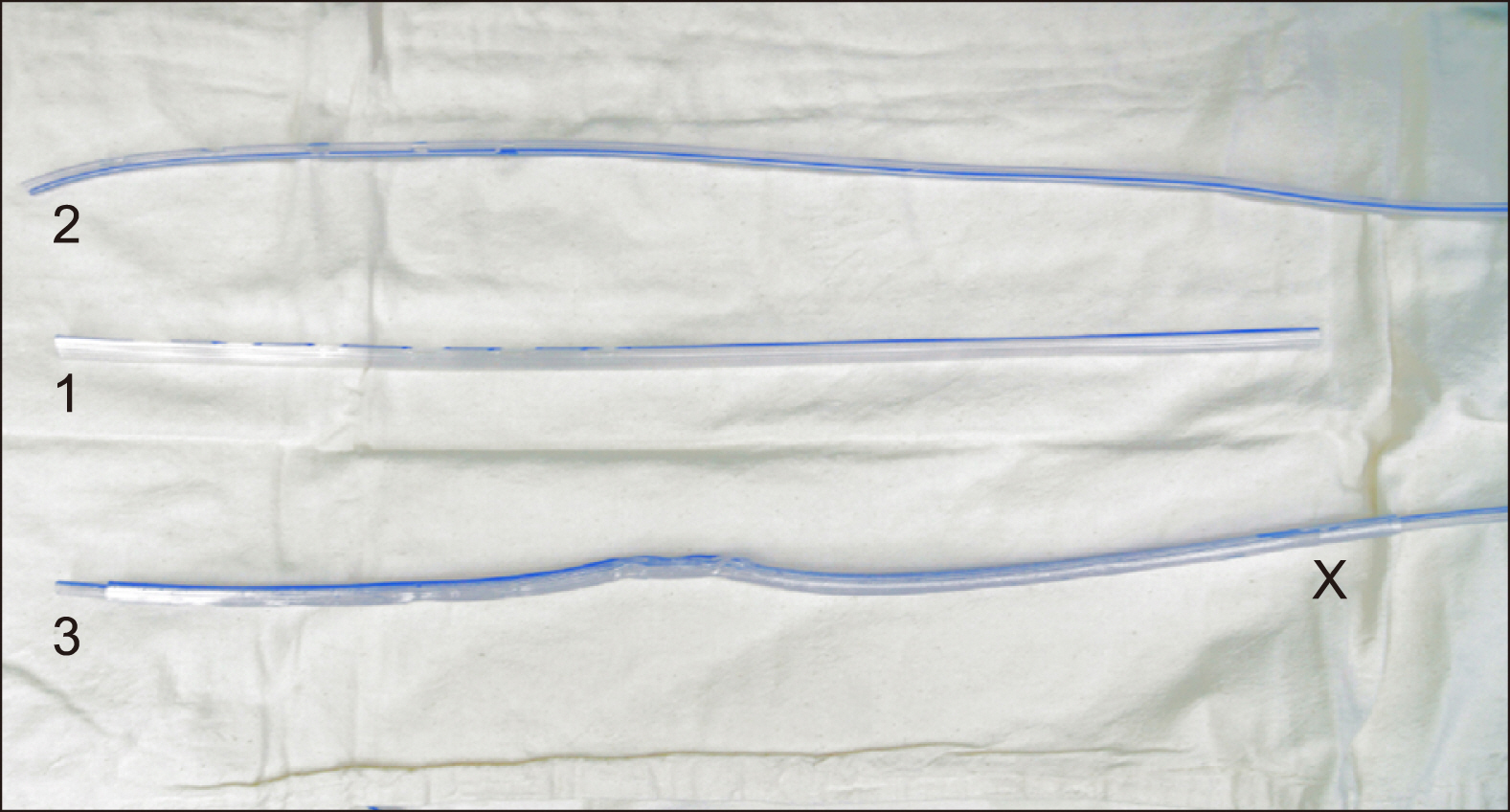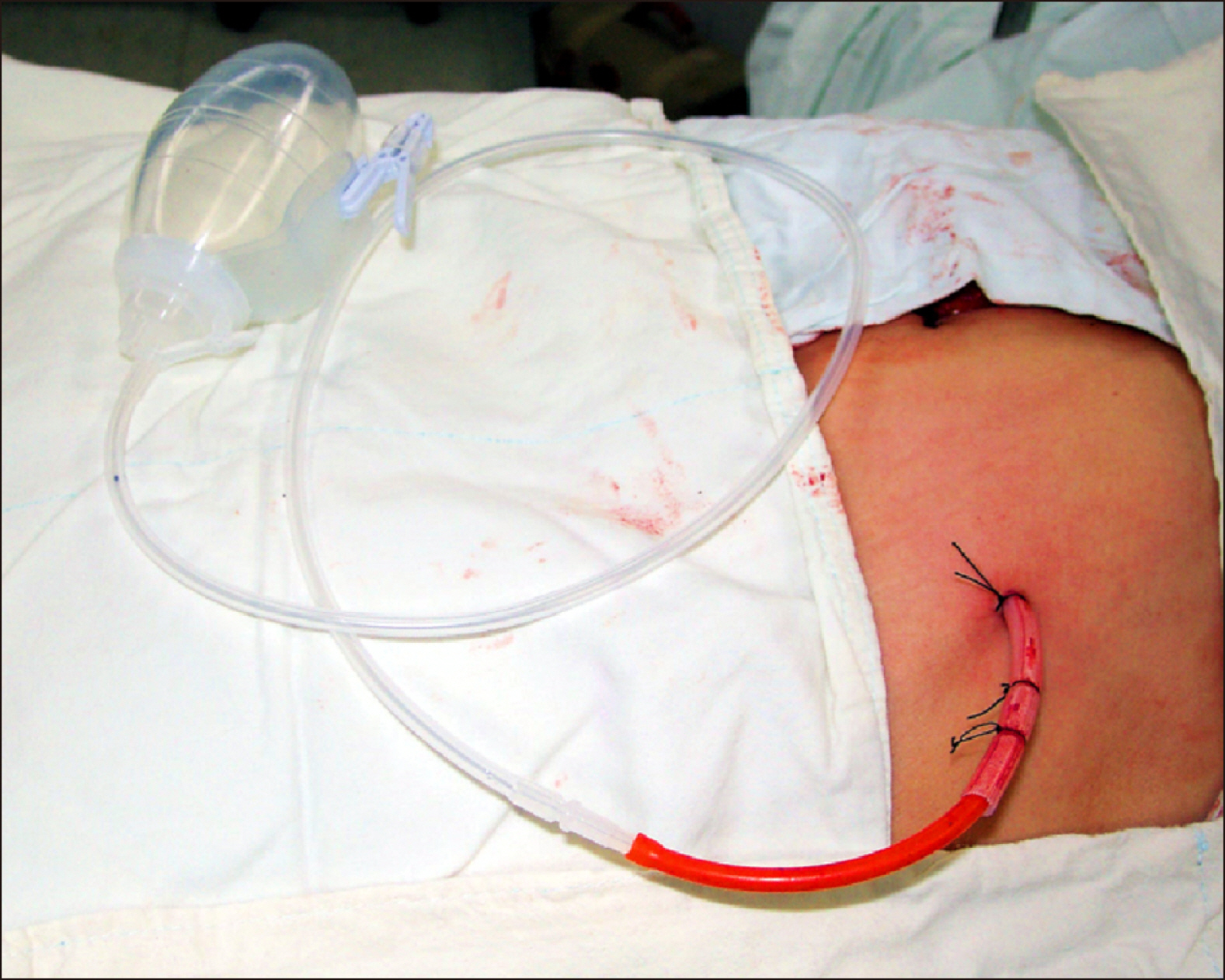Ann Hepatobiliary Pancreat Surg.
2020 Aug;24(3):305-308. 10.14701/ahbps.2020.24.3.305.
Application of suction-type cigarette drain in leak-prone hepatopancreatobiliary surgery
- Affiliations
-
- 1Department of Surgery, Asan Medical Center, University of Ulsan College of Medicine, Seoul, Korea
- KMID: 2505343
- DOI: http://doi.org/10.14701/ahbps.2020.24.3.305
Abstract
- Backgrounds/Aims
Penrose drain and Jackson-Pratt (JP) drain have benefits and drawbacks in terms of functional reliability of prolonged duration and easiness of bedside management. We have developed a suction-type cigarette drain (SCD) to compensate for the drawbacks. Methods: We have used SCDs in leak-prone or contaminated hepatopancreatobiliary surgeries since 2020. Herein, we describe key elements of our 20-year experience with the management of SCDs. Results: The SCD is available as two-piece and three-piece types. The two-piece SCD is a cigarette drain consisted of a silastic Penrose drain and Jackson-Pratt (JP) drain bearing multiple side holes. The three-piece SCD is a cigarette drain consisted of a silastic Penrose drain, internally located Nelaton catheter with multiple side-holes, and a connecting JP drain tube and bulb. These SCDs were inserted into the abdominal wall with a hemostat clamps and sealed with air-tight ties. Three sets of SCDs were usually inserted in more than 100 cases of patients who underwent pancreatoduodenectomy, and none of them underwent repeat surgery for postoperative pancreatic fistula. In more than 30 patients with extensive abdominal contamination, a single SCD was usually inserted into the high-risk point of fluid collection and none of them underwent repeat surgery to manage collection of abnormal fluid or abscess formation. Conclusions: Our experience suggests that SCD is highly reliable and acceptably convenient for clinical application in abdominal drainage.
Figure
Cited by 1 articles
-
Retroduodenal resection of the extrahepatic common bile duct with in situ re-implantation of the main pancreatic duct: A report of two cases
Shin Hwang, Dong-Hwan Jung, Tae-Yong Ha
Ann Hepatobiliary Pancreat Surg. 2020;24(3):373-380. doi: 10.14701/ahbps.2020.24.3.373.
Reference
-
1. Hwang S, Ha TY, Kim JS, Cheong O, Kim KH, Lee SG. 2004; Clinical application of sution-type cigarette drain for hepatopancreatoabiliary surgery. J Korean Surg Soc. 67:428–431.2. Swartz AL, Azuh O, Obeid LV, Munaco AJ, Toursavadkohi S, Adams J, et al. 2012; Developing an experimental model for surgical drainage investigations: an initial report. Am J Surg. 203:388–391. discussion 391. DOI: 10.1016/j.amjsurg.2011.09.015. PMID: 22364905.
Article3. Whitson BA, Richardson E, Iaizzo PA, Hess DJ. 2009; Not every bulb is a rose: a functional comparison of bulb suction devices. J Surg Res. 156:270–273. DOI: 10.1016/j.jss.2009.03.096. PMID: 19691976.
Article4. Cheng Y, Xia J, Lai M, Cheng N, He S. 2016; Prophylactic abdominal drainage for pancreatic surgery. Cochrane Database Syst Rev. 10:CD010583. DOI: 10.1002/14651858.CD010583.pub3. PMCID: PMC6611488. PMID: 29928755.
Article
- Full Text Links
- Actions
-
Cited
- CITED
-
- Close
- Share
- Similar articles
-
- Clinical Application of Sution-type Cigarette Drain for Hepatopancreatoabiliary Surgery
- New Approach to the Care of Suction Drain Insertion Site by Using Occlusive Transparent Film Dressing
- Fat Harvest Using a Closed-Suction Drain
- A Comparative Study of Subcutaneous versus Intra-Articular Indwelling Closed Suction Drainage after Total Knee Arthroplasty
- Suction Drain Tip Culture after Spine Surgery: Can It Predict a Surgical Site Infection?






